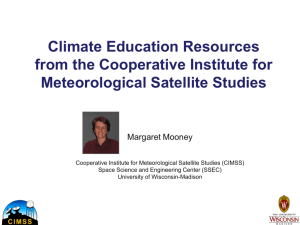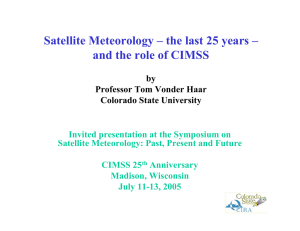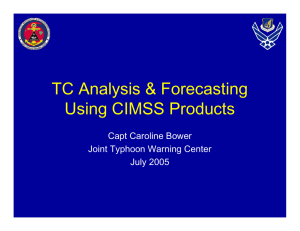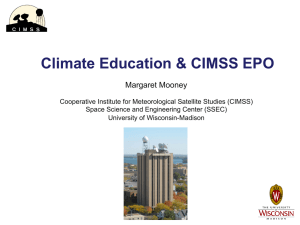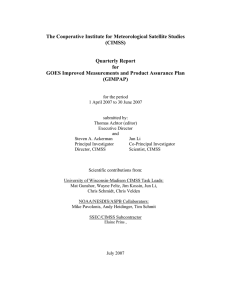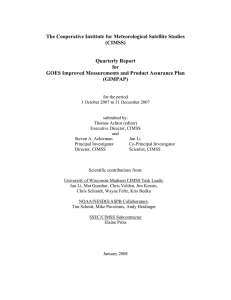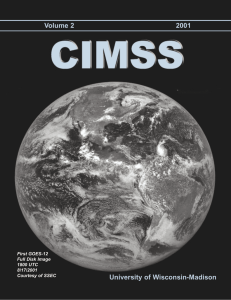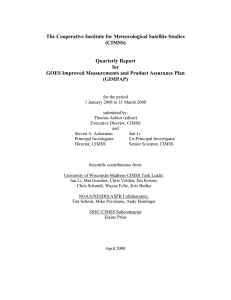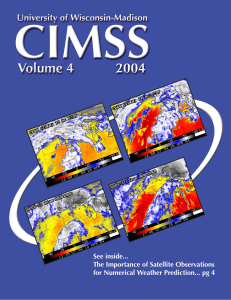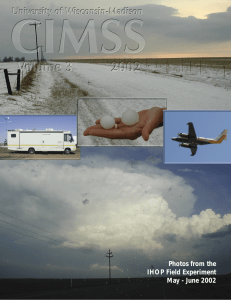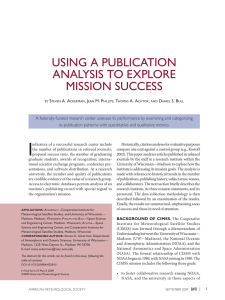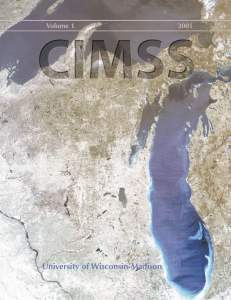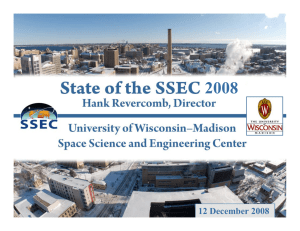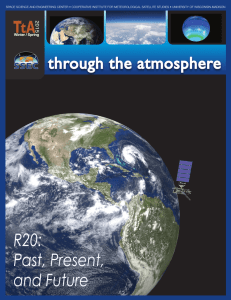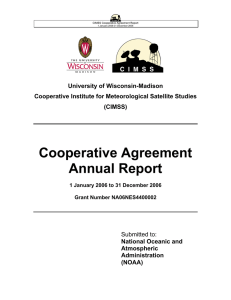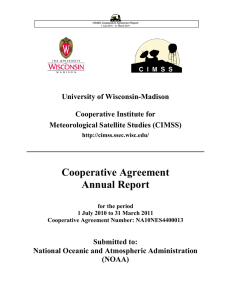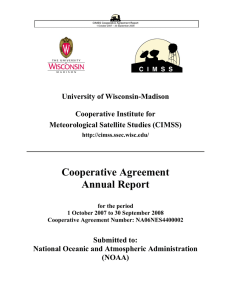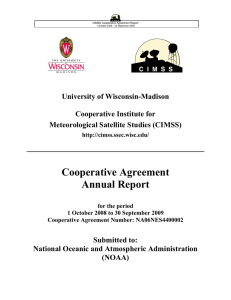Joleen Feltz, Will Straka, Kaba Bah
advertisement
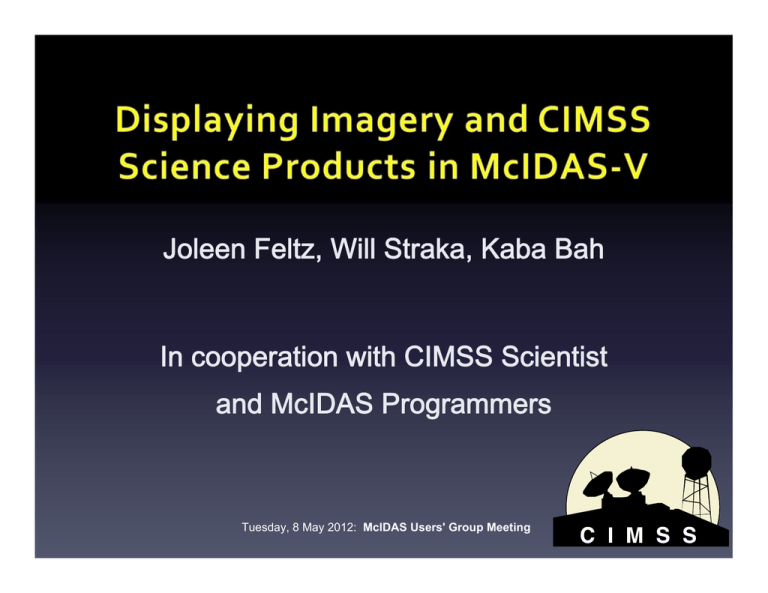
Joleen Feltz, Will Straka, Kaba Bah In cooperation with CIMSS Scientist and McIDAS Programmers Tuesday, 8 May 2012: McIDAS Users' Group Meeting Acknowledgements • McIDAS Imagery and Visualization: Tom Whittaker, Tom Rink and Tommy Jasmin • CIMSS Scientist: Anthony Wimmers, Justin Sieglaff, William Straka, Jason Otkin, Tony Schreiner, Kaba Bah, Elizabeth Weisz, Wayne Feltz, Tom Achtor, Robert Knuteson • NOAA/NESDIS Satellite Applications Branch: Tim Schmit, Ralph Peterson, Gary Wade Bundles: Reckless but useful bundle tricks • When an ID is used: – Change or turn off layer labels – Access multiple panels in a bundle • Zoom, change projection/change centering • Change color scale (enhancement) and range • Step through an animation, get timestamp information • Replace data within the bundle VIIRS Band I05 (11 um), 4/14/2012, 1925Z BT = 188.8K CIMSS/SSEC Norman, OK Storm Case Study 9 Tropopause Fold Turbulence Product: Anthony Wimmers (CIMSS) Tropopause Fold Turbulence Product: Anthony Wimmers (CIMSS) UW Convective Initiation / Cloud Top Cooling (UWCI/CTC) Algorithm High-level algorithm overview • Compute box-averaged 11 micron brightness temperature (BT) for current time and previous time, using specific categories from GOES Cloud Typing product • Unfiltered Cloud Top Cooling (CTC) Rate is calculated by differencing box average 11 micron BT for current time from previous time • Large/small box approach eliminates most of false CTC due to cloud motion (and additional checks reduce false cooling further) • Combine cloud-top cooling information with cloud-top microphysical (phase/cloud type) transitions for convective initiation nowcasts Reference: Sieglaff et al., 2011 13 Justin Sieglaff , Lee Cronce, Dan Hartung, Wayne Feltz (CIMSS) Files without time as a dimension •Time information in metadata and filename. •NCML allows the user to assign time information to the grids. •Grids must share same dimensions and navigation. Data without a time dimension can be useful: •Show multiple polar orbiting granules in one frame •When comparing with data that does not share a timestamp (e.g. comparison of geostationary to polar oribiting imagery) It is possible to create a time series of polar oribiting data •Tom Rink wrote a formula which allows the user to supply a list of flat fields and a list of times from which an image sequence is created •Have only used it in the jython shell because an array of grids and times is used. Could this easier? •Allow the user to assign a time either manually, automatically from the metadata, or filename pattern matching •Allow user to assign a time to a single image/grid •Make this available from the field selector Should it be easier? Public Outreach Temperature (°C) NSSL WRF Simulation of Thunderstorm Complex: Jason Otkin (CIMSS) Calibration/Validation • findWithinRange • createAreaField • computeSum • maskWithinRange McIDAS‐X Products in McIDAS‐V GOES Sounder DPI: Lifted Index/ Cloud Top Temperature GOES Sounder DPI: Gary Wade, Tim Schmit, Tony Schreiner NEARCAST Convective Instability: Ralph Peterson UWAIRS Dual Regression Algorithm: Elizabeth Weisz
